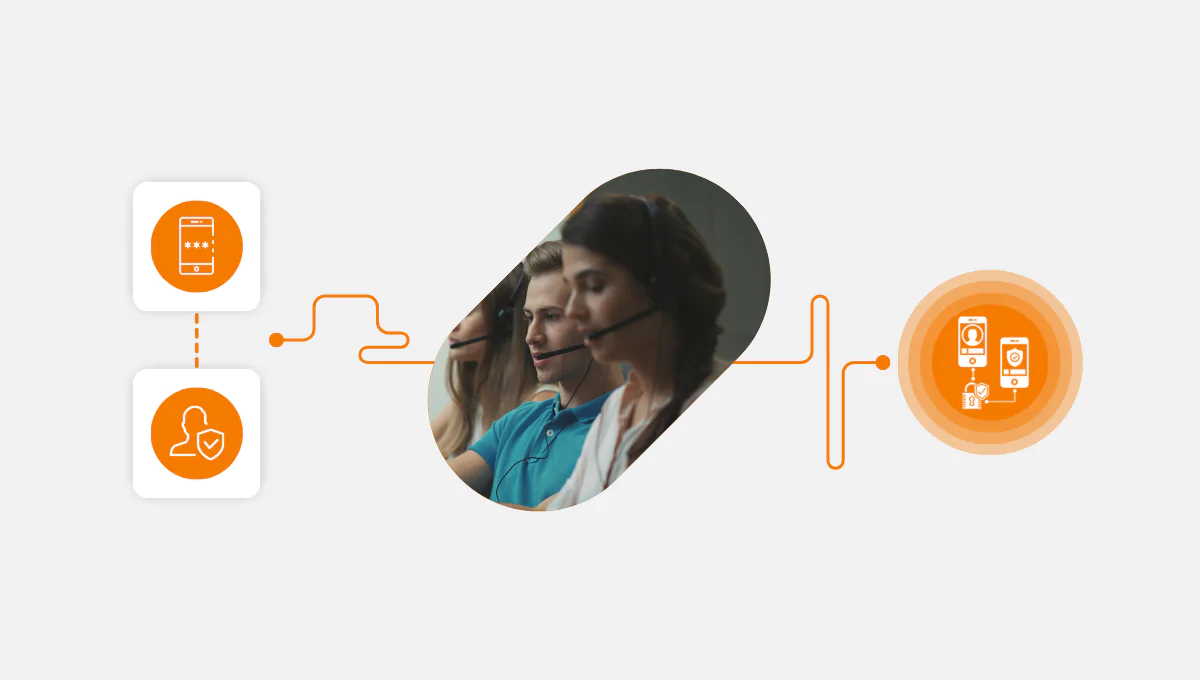ACD stands for automatic call distribution, and ACD in call center is very significant for the happiness of clients. Customers can call at the same time, and, at that point, ACD becomes involved. ACD is a telephony software that gets incoming calls and distributes them to available agents automatically. With the help of this system, large volumes of calls can be managed in an effective way. Furthermore, call center agents do not feel suffocated with ACD, and this system makes the work of call center teams easier.
Generally, ACD works with computer telephony integration (CTI) systems and interactive voice response (IVR) for appointing incoming calls to suitable call center agents. Firstly, IVR receives necessary customer information, and then, the information is utilized by ACD for distributing the call in a good way. To increase customer satisfaction and call center performance, IVR and ACD are often used together.
How Does ACD Work?
The work process of ACD can be explained in three steps briefly. The first step is caller identification in which necessary information about the callers are gathered. The second step is call queueing in which a proper waiting list of the callers is established. The last step is call distribution in which the callers are distributed to appropriate call center agents, and different types of call distribution can be considered in this step.
Caller Information and Identification
Firstly, the goal of the customer for calling the center is detected with IVR. Also, Caller ID Systems can be used in this step to perceive important details about customers, such as their language and location. With the help of Caller ID Systems, ACD can decide the most appropriate agent who can deal with the caller’s issue.
Call Queueing
With the consideration of the availability of agents, a waiting list which covers callers is prepared in the second step, so this step is called call queueing. The order of callers in the list is determined by callers’ status, waiting time, query, and so on. In addition to these order factors, there can be VIP callers, and these callers get the priority to reach a call center agent.
Call Distribution
The last step is the distribution of callers to appropriate call center agents. In this step, the information about callers that are collected in the previous steps is used. Moreover, different types of call distribution can be considered to direct callers to agents. Companies can select among these call distribution types by considering the features of the businesses. If you want to learn and choose the best type of call distribution for your company, you can get necessary information about these types below.
Types of Call Distribution
The below mentioned types of called distribution can assort with companies which have different properties, so these call distribution methods should be chosen with the consideration of the circumstances of companies.
Fixed Order Call Distribution
In this call distribution type, call center agents are found in a fixed order, and callers are distributed according to this order. For example, calls go to the first agent on the list, and they go to the second agent on the list if the first one is busy. Like in this example, a constant agent order is followed in this method.
If you think that your company is full of experienced, equipped, and quick call center agents, you can prefer to utilize this call distribution method.
Talk-time Call Distribution
For ensuring that each agent works within a same time amount, talk-time call distribution can be used. In this method, the agent who has the least talk-time is detected, and the new call in the call queue is directed to the agent.
If you want each employee to has the same workload, you can select talk-time call distribution.
Simultaneous Call Distribution
This call distribution method is the most suitable one for customer satisfaction because it depends on caller waiting time. In this method, all agents are stimulated at the same time when an incoming call appears. Then, the first agent, who is the fastest person to get the call, starts to deal with the caller’s issue.
If you want to decrease customer waiting time in your call center, you can choose simultaneous call distribution.
Rotary Call Distribution
This call distribution method is also known as rotational call distribution, and it is the most common distribution method in ACD. This method can be thought of as a cycle; call center agents encounter a loop for receiving calls. For instance, the first agent gets the first call, the second agent gets the second call, the third agent gets the third call, and the situation continues like that. Then, the cycle repeats when the previous loop finishes.
If you want each agent to has equal volume of workload, you can select the common type of call distribution.
Time-based Call Distribution
Time-based call distribution focuses on agents’ availability. If a call is received, the method detects all available call center agents, and then, these agents are warned about the call. When all agents are not available for the call, the call directly goes to voicemail.
If you do not want to be called in off-hours of your call center, you can choose time-based call distribution.
Weighted Call Distribution
This method is also known as skills-based routing, and the properties of call center agents are considered in this method. For the method, common skills of agents are scored, and calls are distributed according to these scores. Generally, language proficiency, efficiency, comprehension, expertise, and response time of agents are considered and scored in the method.
With this method, you can prioritize your agents’ skills and direct incoming calls to your agents according to the skills. In other words, the calls can go to the agents with relevant skills which should be used in the solution of customer issues.

The Benefits of ACD
ACD has important benefits on call centers, call center agents, and customers. For example, ACD can develop brand loyalty and change customers’ attitudes and opinions. Also, call center agents and their workload can be managed efficiently with the help of ACD. Moreover, call center costs can be decreased via ACD.
Development of Brand Loyalty
When companies prefer to utilize call center ACD, they can get the chance to increase brand loyalty of their customers. With the help of ACD, customers do not wait a long time for talking with call center agents, and their problems can be solved quickly. As a result of this situation, customer satisfaction can increase, and brand loyalty can be improved.
Proper Management of Workload
An ordered and systematic manner is adopted in ACD, so each call center agent gets the same workload. In other words, with the help of ACD, there is no discrimination between them in terms of workload. Furthermore, ACD can avoid time wasting of agents during working hours. In addition to these, employers can understand the performance of their agents in handling incoming calls with call monitoring and research how their agents’ skills can be developed.
Decline in Contact Center Costs
First call resolution rate can be improved with ACD because ACD system transfers calls to the most suitable agents, and customers get quick responses with the system. Also, customers do not have to talk with other departments, thanks to this system. As a result of the circumstance, time in which agents answer a call and the cost per call in call centers are reduced.
If you want to improve customer satisfaction by decreasing the waiting time of customers on the phone, you can focus on Call Center Studio’s ACD. Feel free to contact us to learn our technology infrastructure.




